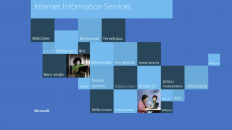The global remote desktop software market reached a value of $1.9 billion in 2021.
Windows RDP is a relatively new tool that people need to know about, as more employers are now using virtual desktop infrastructure (VDI). Because Windows RDP enables users to connect to workstations and servers remotely, candidates can use a single remote desktop connection to log into multiple machines.
So what is RDP, and how are companies using it? Keep reading to find out.
What Is Windows RDP?
RDP (Remote Desktop Protocol) is a tool that Microsoft developed to allow users to connect to other computers from a remote location. Other tools have the same overall purpose such as ICA (Independent Computing Architecture) and VNC (Virtual Network Computing), but RDP is the most popular protocol of this type.
When Microsoft first released RDP, it was only available on Windows devices, but Mac operating systems now support it too. With RDP, a user can access the full functionality of a computer from anywhere with an internet connection. This means they can access and edit files and use any installed applications.
One of the most common uses of RDP is when people are traveling. They can use it to access their work computer so they can keep working from wherever they are. With the rise in remote work in recent years, many companies have begun using RDP to allow their employees to work from home.
Cloud computing is another option that allows people to work remotely, but it works differently. With cloud computing, people can remotely access data stored on the cloud, rather than on a specific computer.
Some companies prefer to use cloud computing, but it does present some challenges from a security perspective and would require moving the whole company over to a cloud-based system.
RPD is often confused with VPS (virtual private server). VPS is different in that it’s a virtual machine that allows you to host data. It also runs its own OS, so both Windows and Linux VPS servers are available.
How RDP Works
RDP works by transmitting controls from one device to another and displaying the output on the device that’s being used. These controls come in the form of keystrokes and mouse movements/clicks. Whatever is happening on the device that’s being controlled will show up on the screen of the device in use via an internet connection.
Data is sent between the two devices through a dedicated network channel. The system will automatically use network port 3389, sending all interactions via TCP/IP (Transmission Control Protocol/Internet Protocol). This is the protocol used for almost all internet traffic.
When any data is sent through RDP, it’s encrypted. Due to this encryption and the transmission of data, there is often a slight delay between control inputs and the output on the display when using a Remote Desktop program. It’s typically just a few milliseconds, but it’s something to be aware of.
Typical RDP Uses
One of the most common reasons someone might use a Windows remote desktop is to work while traveling. Aside from this, there are various other use cases for an RDP.
System Administration
There are various tasks that you might need to access a computer for beyond work, and sometimes this just means administration. Software technicians and support agents can provide assistance from any location when there is a technical issue with a computer.
They can take care of things such as:
- Updates
- Troubleshooting
- Software installation
- Device set-up
- Email set-up
- ID protection settings
On top of this, it means that security threats can be handled remotely. They can install antivirus software and remove spyware to help keep the device secure.
Demos
Because software from one device can be displayed on another, it presents a convenient way to demonstrate certain applications in action. You can prepare a demo ahead of time on your work computer, then display it at another time on any device. This is ideal for giving a presentation during a conference or a client meeting, for example.
Computing Power
Depending on the nature of your work, there may be certain power requirements involved. Your work computer may be more powerful than many other devices so that it can handle the software needed at a reasonable speed.
With RDP, you don’t need to worry about the computing power of the device you’re using. As it simply displays what’s happening on the other computer, it’s that device that will provide the power. This means you can perform very power-intensive tasks from a less capable device without any issues.
Security Concerns
The fact that RDP is directly built into Windows makes it safer, but that doesn’t mean it’s 100% secure. As data is transmitted over the internet, there is always a risk of malicious attacks. Fortunately, there are several things you can do to improve the overall security of your system:
- Follow strong password protocols
- Use multi-factor authorization
- Use lockout policies to prevent brute force attacks
- Whitelist trusted hosts
- Secure all RDP ports when it’s not in use
- Don’t give RDP ports administrative permission
- Use a firewall for VPN ports only allowing them to be accessed via a VPN
- Enable automatic updates to ensure exploits are patched as fast as possible
At RPD Arena, we have several RDP plans available, but all have a strong focus on security and reliability. One of the main benefits of RDP is that we can tailor it to your business needs and make changes at any point.
Your RPD Solution
RPD Arena offers various Windows RDP solutions to meet the needs of any business. We’ve been a leading RPD provider since 2012, giving us a decade of experience that makes us one of the best providers around.
Click here to take a look at our different pricing plans today.




Add comment